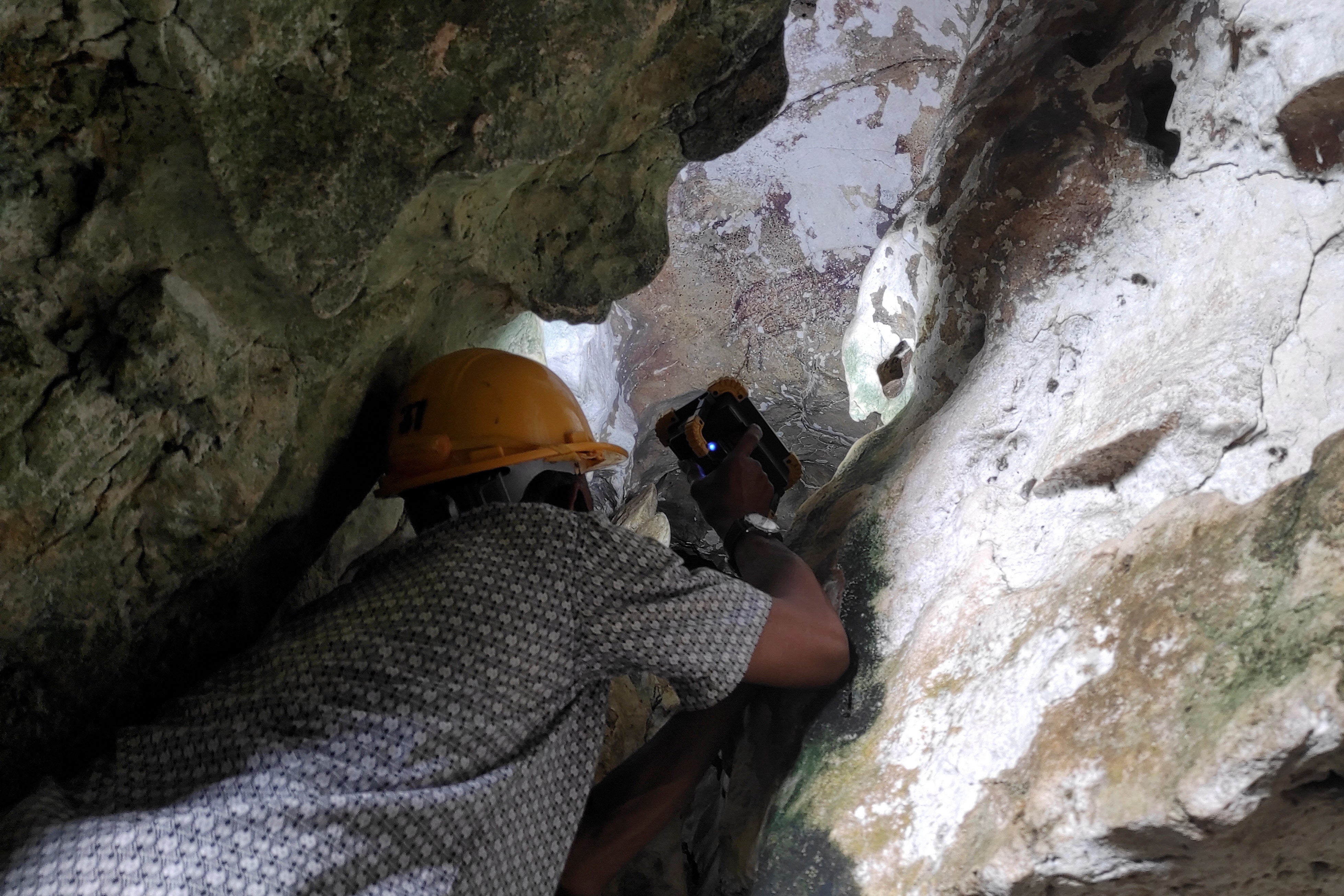Salt erosion destroying world’s oldest cave painting at rapid pace
‘The impact is very severe and will destroy the paintings’

Your support helps us to tell the story
From reproductive rights to climate change to Big Tech, The Independent is on the ground when the story is developing. Whether it's investigating the financials of Elon Musk's pro-Trump PAC or producing our latest documentary, 'The A Word', which shines a light on the American women fighting for reproductive rights, we know how important it is to parse out the facts from the messaging.
At such a critical moment in US history, we need reporters on the ground. Your donation allows us to keep sending journalists to speak to both sides of the story.
The Independent is trusted by Americans across the entire political spectrum. And unlike many other quality news outlets, we choose not to lock Americans out of our reporting and analysis with paywalls. We believe quality journalism should be available to everyone, paid for by those who can afford it.
Your support makes all the difference.A cave painting on the Indonesian island of Sulawesi, believed to be the world’s oldest, is decaying at a rapid pace because of salt erosion likely caused by climate change, archaeologists have warned.
The painting of a group of therianthropes, or humans with animal characteristics, appearing to hunt animals was found in a limestone cave in 2017 and dated back nearly 44,000 years ago.
Experts are now racing against time to find ways to preserve the priceless Pleistocene artwork.
“The impact is very severe and will destroy the paintings,” Basran Burhan, an archaeologist from Australia’s Griffith University, told Reuters after inspecting the painting at Maros.
Warming temperatures and the increasing severity of El Nino events has helped speed up salt crystallisation in the cave, effectively “exfoliating” the painting, according to a study by Australian and Indonesian archaeologists published in Scientific Reports last month.
Prolonged drought combined with heavy monsoonal rainfall has created “highly favourable” conditions that have intensified the salt crystallisation, the study said.
“The pigment that makes up the image on the cave wall is peeling off,” said archaeologist Rustan Labe, pointing at images on his laptop showing the scale of exfoliation between October 2018 and March 2019. The picture documentation showed 1.36898 square centimetres had peeled off within those six months.
Labe, who works at the Ministry of Education and Culture’s Cultural Heritage Conservation Center, said archaeologists will work in small teams to monitor the growth of salt crystals and other tiny organisms on the cave wall.
“We will prevent and tackle the factors that might be a threat, and address the matter immediately,” Rustan said.
Reuters
Join our commenting forum
Join thought-provoking conversations, follow other Independent readers and see their replies
Comments